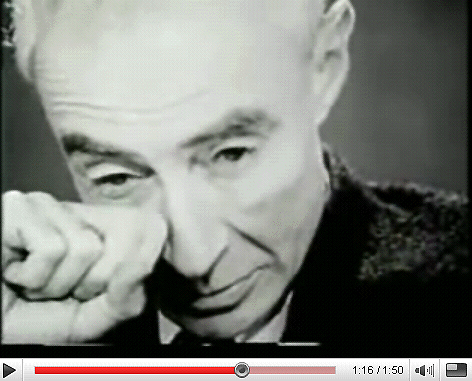A Blast from the Past
BY: SUN STAFF

Jun 17, CANADA (SUN) — Atomic ruins found in Jodphur from millennia ago may be nuclear blast described in Mahabharat.
As concerns escalates about potential for the use of nuclear weapons in the Middle East, it's interesting to consider discoveries in our recent history, which indicate that nuclear war on planet earth is not a new phenomenon. Several years ago, a report was issued in the UK's World Island Review about a mysterious discovery in Rajasthan of an ancient city that appears to have been leveled by an atomic blast… many thousands of years ago. A construction team discovered the site while preparing to build a housing development near Jodhpur.
According to the report, a heavy layer of radioactive ash was found in a three square mile area around the building site. According to World Island Review, the area concealed "an ancient city where evidence shows an atomic blast dating back thousands of years, from 8,000 to 12,000 years, destroyed most of the buildings and probably a half-million people. One researcher estimates that the nuclear bomb used was about the size of the ones dropped on Japan in 1945," said the newspaper.
Soon after the discovery, the area became highly suspect as being the cause of a high rate of birth defects and cancer in the region. "The levels of radiation there have registered so high on investigators' gauges that the Indian government has now cordoned off the region," said the newspaper. Construction was halted while a five member team, led by Lee Hundley, conducted further investigations.
The Mahabharata mentions just such an historic blast event, which some believe may be the Rajasthan blast site. Descriptions in the Mahabharata include the following:
"…A single projectile charged with all the power in the Universe... an incandescent column of smoke and flame as bright as 10,000 suns rose in all its splendor...it was an unknown weapon, an iron thunderbolt, a gigantic messenger of death which reduced to ashes an entire race.
The corpses were so burned as to be unrecognizable. Their hair and nails fell out, pottery broke without any apparent cause, and the birds turned white.
After a few hours, all foodstuffs were infected. To escape from this fire, the soldiers threw themselves into the river."
Archeologist Francis Taylor told the World Island Review that he had translated some of the etchings in nearby temples, which suggest that the local devotees prayed to be spared from the great light that was coming to lay ruin to the city. Taylor remarked, "It's so mind boggling to imagine that some civilization had nuclear technology before we did. The radioactive ash adds credibility to the ancient Indian records that describe atomic warfare." Of course, students of the Vedic literatures known that all manner of technologies were previously manifest on the earth planet, and in fact were far more advanced than the perverted reflections known to us today.
Indian historian Kisari Mohan Ganguli commented that the Vedic writings are full of such descriptions, which sound like the atomic blast experienced in Hiroshima and Nagasaki. He says references mention fighting sky chariots and 'final weapons', which are described as part of an ancient battle narrated in the Drona Parva section of Mahabharata.
"The passage tells of combat where explosions of final weapons decimate entire armies, causing crowds of warriors with steeds and elephants and weapons to be carried away as if they were dry leaves of trees," says Ganguli.
"Instead of mushroom clouds, the writer describes a perpendicular explosion with its billowing smoke clouds as consecutive openings of giant parasols. There are comments about the contamination of food and people's hair falling out."
The architect of the modern atomic bomb who was in charge of the Manhattan Project, Robert Oppenheimer, was asked by a student after the Manhattan explosion, “How do you feel after having exploded the first atomic bomb on earth?” Oppenheimer’s reply to the question was, “Not the first atomic bomb, but the first atomic bomb in modern times”.
Oppenheimer strongly believed that nuclear weapons were used in ancient India, and he based this conclusion on accurate descriptions of such weapons found in the Mahabharata. He believed that the ancient Vedic weaponry mentioned in Mahabharata matched the modern nuclear weapons he was involved in developing. In the following video clip, Oppenheimer discusses the devastation caused by nuclear blast, referring to Sri Krsna on the battlefield of Kurukshetra.

